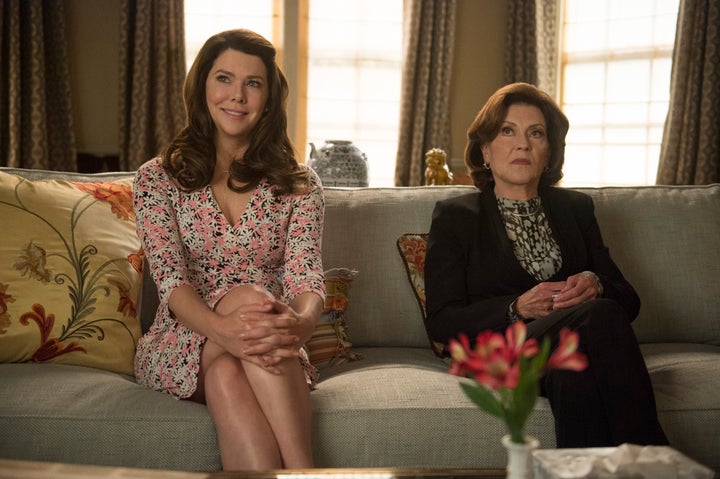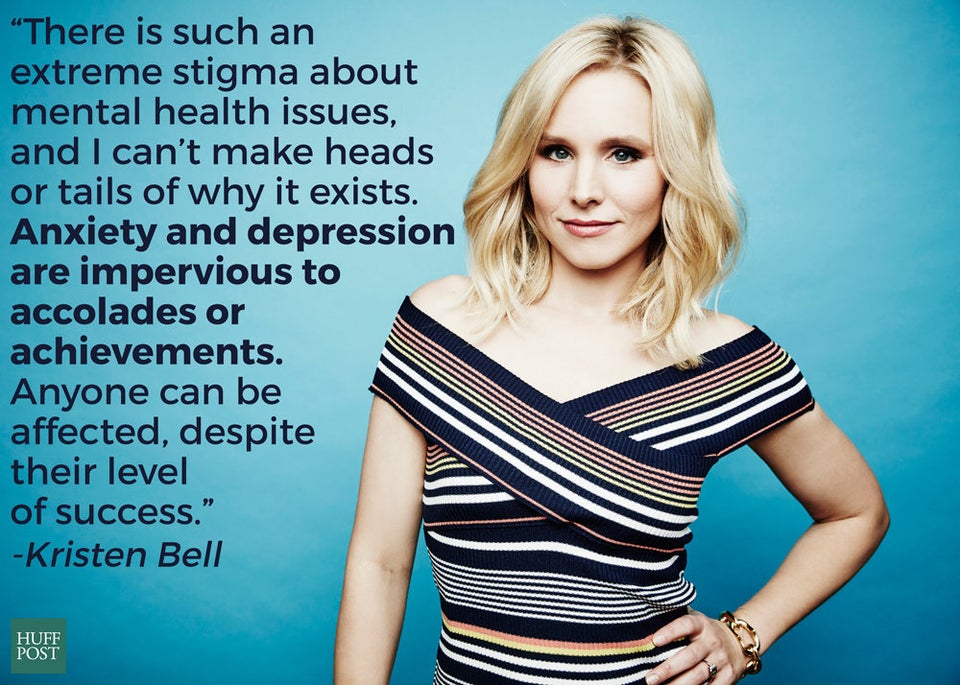Diehard fans may have flocked to the Netflix’s “Gilmore Girls: A Year In The Life,” for the quips, the pop culture references and all the coffee. However, it’s the revival’s quieter, more solemn moments that deserve true praise ― particularly when it comes to therapy.
In real life, seeking psychological support is often viewed as an unsavory byproduct of “losing your mind” rather than treating a very common health condition. Research even shows that many people with mental health issues avoid going to a therapist because they’re afraid of being judged or shamed by peers.
But in Stars Hollow, therapy is just a natural part of grief. And it’s presented in the most nonchalant and obvious way ― just as it should be.

During the first episode of the four-part series, Lorelai Gilmore recommends that her mother Emily sees someone to help process the loss of her husband Richard:
“I’m not crazy,” Emily retorts at the suggestion.
“No, you’re in pain,” Lorelai argues. “This is uncharted territory. If it might help, what’s the harm?”
Emily concedes and the show then chronicles her ― and eventually also Lorelai’s ― journey through therapy as they talk about their grief over Richard’s death and their tumultuous mother-daughter relationship.
It’s a powerful subplot of the revival that deserves attention. The show not only shines a light on therapy, it normalizes it.
Highlighting stigma and mental health access issues
Emily’s initial and instinctual reaction to therapy is reflective of the cultural attitude toward mental health: That seeking support is synonymous with “crazy.”
Even though it’s this exact mindset that needs to be eradicated, it’s critical that it also gets airtime. That way it can also be shut down, according to Srijan Sen, a professor at the University of Michigan Depression Center.
“Because of the stigma in some parts of our society, many people don’t realize how many of their friends, colleagues and family have received therapy,” Sen told The Huffington Post. “TV shows can start conversations and create an environment where people feel comfortable talking about therapy.”
“TV shows can start conversations and create an environment where people feel comfortable talking about therapy.”
- Srijan Sen, University of Michigan Depression Center
Of course, the revival’s portrayal of mental health help didn’t come without other pitfalls. Lorelai and Emily’s therapist, Claudia, wasn’t overly stellar at her job. Aside from one interjection to let the duo know that "anything is allowed" in therapy aside from "physical confrontation" (which is true), she remained mostly silent except for when she announced that their time was up. Viewers don't really get to see how she interacts with the pair as her clients.
Lorelai also has an awkward, out-of-office encounter with Claudia, who is trying out for the town musical Lorelai is helping to oversee. It could be argued that this is a peril of living in a small city like Stars Hollow ― and an issue that also presents itself in real life.
Research shows there’s a large shortage of mental health providers, specifically outside of cities. This leaves little options for people seeking support (and puts a person in a position where they may, say, have a therapist who is also involved in their musical theater production).
“Access to mental health professionals is a huge problem and it is exacerbated because providers tend to be concentrated in cities,” Sen explained. “There are some evidence-based alternatives to in-person therapy such as telepsychiatry and web-based and mobile technology tools but we really need to get more professionals.”
Why this representation ultimately matters
Therapy’s exposure in pop culture is critical to dismantling the misconceptions people have about seeking mental health support.
“When it is a TV character that you connect with, seeing them engage in therapy and benefit from the experience can really help,” Sen said. “TV shows can really help to convey how common these problems are and help viewers who may be suffering to recognize symptoms, feel less alone and hopefully get help.”
“When it is a TV character that you connect with, seeing them engage in therapy and benefit from the experience can really help.”
Approximately one in five American adults will experience a mental health issue in a given year. That number increases when you factor in kids and young adults. The fact is that psychological conditions ― whether acute or chronic ― are strikingly common. It’s only fitting that TV represents that.
And, bottom line, accurate pop culture portrayals can send the message that seeing a mental health professional is just as critical as seeing a primary care doctor.
“Taking care of your mind is just as important as taking care of your body,” Sen said.
The Gilmores would probably agree.
